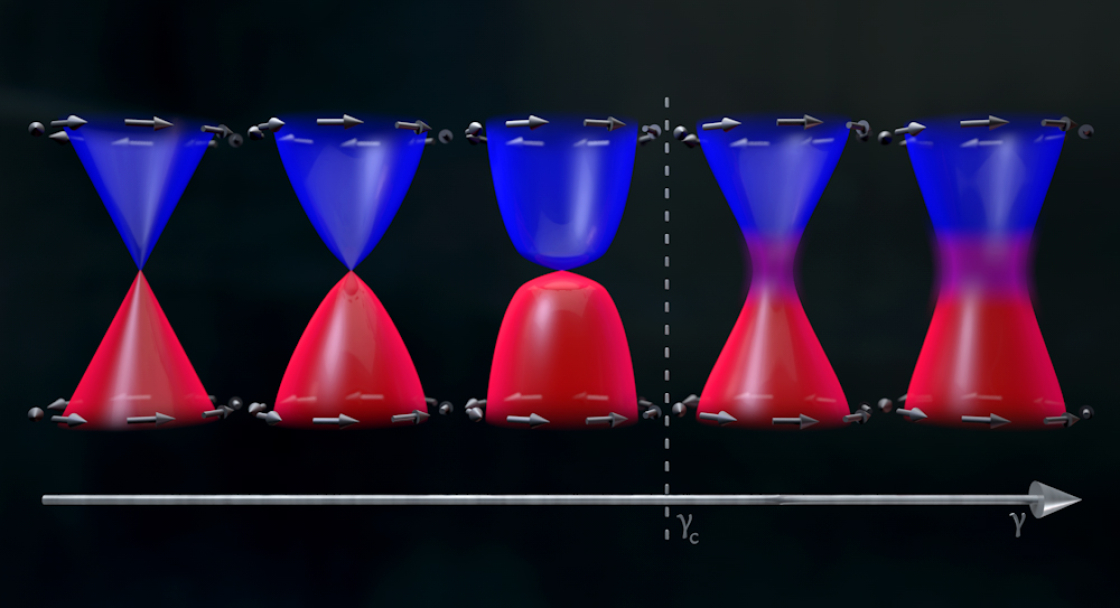As disorder increases (l–r) in Weyl semimetal, a threshold is reached where a transition occurs between a quantum phase in which electrons get more localized and stop moving and a quantum phase with less disorder in which the electrons never become localized and Weyl semimetal acts like a conductor on steroids. Remarkably, the two quantum phases can transition back and forth from one to the other.
In everyday life, conductors are materials that conduct electricity. These materials are used to make metallic wires that carry electricity into our homes. In contrast, insulators, which don’t conduct electricity, surround these wires in our plugs so we don’t get electrocuted plugging in our computers, appliances, and lights. The difference between a conductor and an insulator is often the amount of disorder, or impurities, present in an electronic material. If such disorder exceeds a certain threshold, the impurities can actually stop electron flow and turn a conductor into an insulator, all because of a phenomenon known as localization.
Localization traps electrons in place and prevents them from moving through a material. Showing exactly how localization works requires the complex mathematics of quantum mechanics. Since quantum mechanics leads to all sorts of wild and crazy things, CTQM Junior Fellow Sergey Syzranov and CTQM Fellows Victor Gurarie and Leo Radzihovsky decided to investigate localization in higher dimensions. The wonderful thing about being theorists is that they didn’t consider stopping at three dimensions either.
The three theorists discovered something quite interesting happens in sufficiently high dimensions: Depending on whether or not the disorder exceeds a certain threshold, all conductors will be in one of two distinct quantum phases. In the more disordered phase as the disorder increases, more and more electrons become localized and stop moving—much like they would in our ordinary three-dimensional world. Electrons in this state behave pretty much like they do in conventional conductors.
However, the second phase with less disorder has characteristics that were totally unexpected. In this phase, even when the disorder is added (although not beyond the threshold), the electrons never become localized. As a result, electronic materials in this quantum state behave like conductors on steroids. Even resistance due to impurities doesn’t stop the flow of electrons inside them.
What’s even more curious is that near the disorder threshold, the two quantum phases can transition back and forth from one to the other. Such a quantum phase transition is quite remarkable because electronic materials are complicated, and the two phases are very different.
In the process of learning more about this remarkable quantum phase transition, the theorists realized there may be a way to observe such a transition in a real material such as Weyl semimetal. Weyl semimetal is a three-dimensional analog of graphene. According to the new theory, the quantum phase transition will occur in three dimensions in this unique material, opening the door to observing it in the laboratory!
Right now, it’s impossible to predict the impact of this important discovery on the future of electronics. Theorists often open up new frontiers in science, typically without realizing what those frontiers will look like. For example, when Heinrich Hertz, discoverer of electromagnetic waves, was asked about the ramifications of his discovery, he replied, “Nothing, I guess.” Nothing has turned out to be radio, television, and cell phones, to name a few devices in widespread use today.

